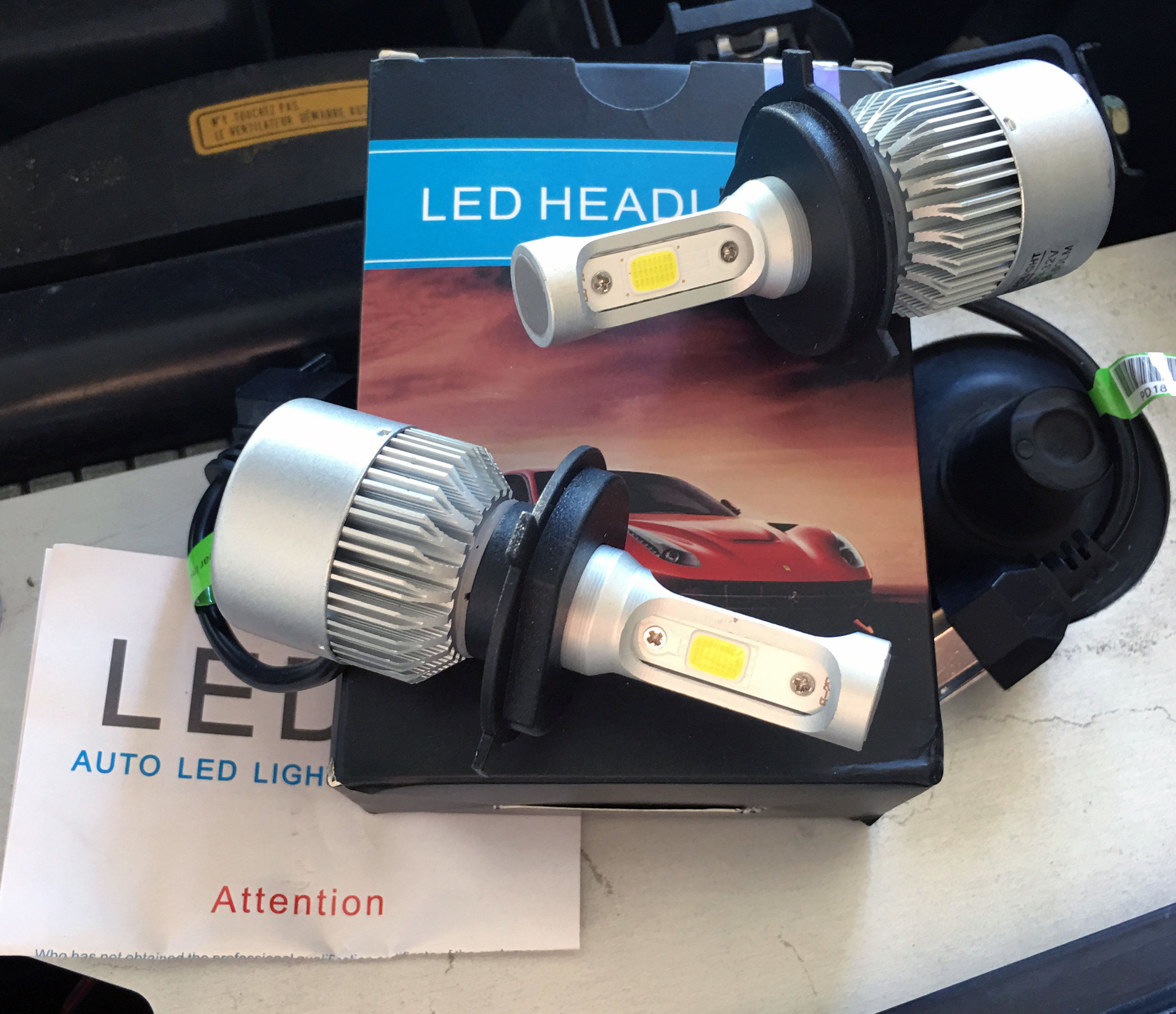[ Alto Works ] Lighting Up the Town
As with many older cars of the era, the headlamps are made of glass. The previous owners installed a set of standard halogen bulbs with a blue glass tint, which is pretty common and popular here. Unfortunately, the light output isn’t as sufficiently bright as I would like, nor is the color output really a shade of blue. The blue in the reflectors does look kinda pretty during the day, though.
Besides the common halogen bulbs, what sort of lighting options do we have? Thankfully, quite a lot. H4 is one of the most common sizes that can fit a huge range of cars, so of course, the aftermarket is extensive. There are many kinds of halogen bulbs, HID xenon systems, and, rather recently, LED replacements. Halogens have a decently long service life and are cheap to replace, but have low output. Aftermarket HIDs were common in the late 1990s and throughout the early 2000s. They offer a much brighter, slightly blue output, but have a blinding pattern, are rather expensive, and require a separate ballast to control power flow. That’s why it was common to see little metal boxes with a mess of wires in HID-installed engine bays. The wiring was such a mess, in fact, that some older kits required a special relay and direct connection to the car battery for operation. As with everything aftermarket, cheap Chinese-manufactured HID kits flooded the market, brought the price down, though they have questionable longevity, some failing in a few months.
That brings us down to LED bulbs, which most OE manufacturers also now utilize. Now that they are several generations into development and production, they have been made very efficient, extremely bright, and relatively inexpensive. They have little drawback other than a somewhat large headsink / fan at the rear of the bulb, making some installations difficult in tight spaces. You can find reliable LED kits from famous manufacturers like PIAA for around $100 USD or down to around $30 USD if you order potentially less QC’d product from China.
So, as expected with my budget, I ordered a set of brand new, Chinese-sourced H4 LED bulbs… for use on my precious Mazda Miata Roadster. (Betcha didn’t expect that!) I actually have a set of H4 HIDs lying around that, for some reason, didn’t work on my Roadster. (Look forward to more on that at a later post.)
The HID H4 bulbs went to my Alto Works instead. They are an unknown Chinese-produced set with simple ballasts. I purchased them two years ago for use on my Wagon R and they worked well. So here they are being repurposed for another Suzuki of mine.
Unfortunately, the front bumper needs to be removed in order to reach the rear of the headlights, which is fine given that I have other concurrent front bumper projects to work on. HID light bulb installation is expectedly easy, as it is a drop-in fit with no changes to the rubber seals like LED H4 bulbs may require due to their length and slightly increased width. The HID ballast, though, needs to be secured somewhere behind the headlight. I temporarily housed it behind the open vents to the sides of the headlights, as the engine bay is getting a little crowded. It will probably be moved around when I need the space for an upcoming project.
Driving local roads will definitely be less unnerving with the brighter output of these bulbs. If they ever fail, I’ll be sure to put in a set of LEDs next. As an aside, the HIDs were unacceptable for passing my recent shaken mandatory inspection. I’ll discuss it more in detail at a later time.







